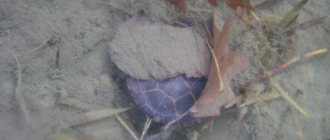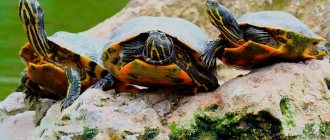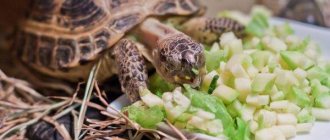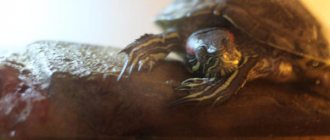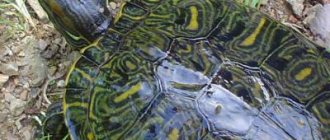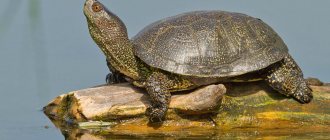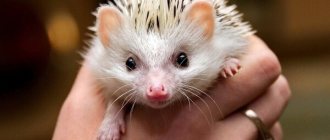Causes
Unfortunately, only 2% of turtles die from old age when kept at home. In older reptiles, the body gradually ages, as a result of which the pet turtle dies from chronic systemic diseases. Much more often, the causes of death of exotic animals at home are:
- improper maintenance of the reptile;
- unbalanced diet;
- lack of vitamins and mineral elements;
- violation of the conditions of transportation or keeping in a pet store;
- congenital pathologies;
- overfeeding;
- infectious and non-communicable diseases;
- decreased immunity.
Congenital developmental disorders or decreased immunity are criteria for natural selection; animals with such developmental defects most often die in the first month of life. 40% of the causes of turtle deaths are due to violation of feeding and keeping conditions at home, 48% due to negligent treatment of animals during transportation and storage in pet stores. Very often, people purchase an already sick, exhausted reptile that has no chance of survival.
According to science
What benefits did the census bring?
- First, it showed that the number of waterfowl is constantly growing (with slight fluctuations from year to year): for example, the number of mallards when the census began was only about 13 thousand.
- The number of bird species remaining in the urban environment for the winter is increasing.
- The study also showed an increase in the amount of water surface suitable for bird habitat.
At the same time, urban wintering birds as a natural phenomenon remain a little-studied phenomenon that awaits its researchers.
By the way, scientists have found a direct relationship between the economic well-being of urban residents and the number of urban ducks in ponds. After the crisis of the 90s, the total number of individuals in the duck population in city ponds began to decline and reached the level of just over 7 thousand mallards in 1997. But then the population began to grow again. Currently it has reached its maximum value. But, according to zoologists, this is not the limit.
Signs of hibernation
The state of wintering is often confused with death. To put your mind at ease, check your red-eared slider for several points that will help you understand that it is definitely hibernating:
- Jaws. Try to pull your lower jaw down and leave your mouth open. The reptile should try to close its jaws.
- Eyes. A cold metal spoon placed against your pet's eye should trigger the corneal reflex. If the turtle tries to retract the disturbed organ or opens its eyelids, then there is no reason to worry.
- Reaction to heat. A hibernating red-eared turtle placed in a container of warm water (30°C) will begin to move its paws.
Otherwise, signs of hibernation include:
- Decreased activity. The pet behaves lethargically, hides in a corner of the aquarium, remaining motionless, and refuses to leave its house for a walk.
- Poor appetite. In addition to loss of activity, the reptile refuses its favorite food and reduces its usual amount of food.
- Increased sleep duration. Long periods of rest are accompanied by frequent yawning.
Overwintering device for an adult turtle
A decrease in ambient temperature in September-October is the main signal for turtles that it is time to prepare for hibernation. By this time, the turtles are already fully prepared for such a change and have stocked up on the necessary amount of fat. For the winter, most swamp turtles sink to the bottom of the reservoir and bury themselves deep in the mud. The temperature of the mud where the turtles hide does not fall below 3-5 °C, so adult turtles do not freeze completely.
In dense mud, the turtle hibernates, stops breathing, and slows down its heartbeat and metabolism. The turtle spends the entire winter in this state, waking up only when the water temperature rises to +5-7°C. In rare cases, marsh turtles hide for the winter in dug burrows on steep banks near a pond, but such cases are extremely rare and are observed mainly in reservoirs where the silt layer is insufficient for wintering turtles.
A red-eared slider from the USA attacked water bodies in Moscow and the Moscow region
Alexander Zhirnov
The red-eared turtle (Trachemys scripta elegans), a characteristic inhabitant of freshwater bodies of North America, thanks to human negligence and good adaptability to various natural conditions, is actively settling in rivers and ponds of the Moscow region. Experts have long been saying that this species of reptile is a real invasive threat to central Russia.
Red-eared turtles, as it turned out, do not find it difficult to exist in Russian cold conditions due to their unique ability for long-term anaerobic existence at very low temperatures. Animals can sleep for three months, burrowing into the silt at the bottom of frozen bodies of water. They are fertile, mobile, omnivorous and enter sexual maturity early.
Russian ponds and rivers have been attacked by overseas guests in recent years due to the fact that they were turned out of the door by their previous owners - people who bought small, cute turtles, but later did not want to take care of large, not very fragrant and voracious pets. In indoor conditions, an adult red-eared slider requires an aquarium with a volume of 100 liters and enhanced nutrition. These reptiles usually live up to 40 years. All this makes them not very desirable in city apartments.
Few gullible buyers at bird markets know that the International Union for Conservation of Nature has included the red-eared turtle in the top hundred invasively dangerous plants and animals. In the United States, the invasion of these “cuties” was encountered after the end of World War II, when the demand for pets increased sharply. By 1996, their exports from the United States reached eight million. Israeli environmentalists were the first to sound the alarm. Red-eared animals have already occupied the territory of Spain, Italy and France and continue to actively expand their range to the north and east of Europe, displacing local species. Rare aquatic plants, almost all amphibians, aquatic insect larvae, and endangered aquatic and semi-aquatic invertebrate animals that are important for the functioning of ecosystems are under threat. The situation becomes especially acute in urban environments, where local organisms exist literally on the brink of survival. But this is where the red-eared turtle invasion begins.
Another danger is the ability of the red-eared turtle to spread a dangerous disease - salmonellosis, which is why the number of farms breeding these animals has long been reduced in the United States. Many European countries already have a range of measures in place to prevent the further spread of Trachemys scripta elegans. The European Union has introduced a complete ban on trade in this species.
In Moscow, in the last decade, there have been more and more cases of detection of the red-eared turtle. At first, environmentalists believed that she could not survive in the Russian cold, but practice has shown that this is not so. They are regularly found in the Tsaritsyn and Kuzminsky ponds, Yauza, Chermyanka, Mars and Dzhamgarovsky ponds, as well as in the Altufevskaya River. This year, Muscovites noticed American invaders in the Vorontsovsky and Chernevsky ponds.
Description
The length of the carapace of males is 14-17 cm, and that of females is 16-20 cm. Their weight, respectively, reaches 400-700 g and 800-1000 g. Males have longer and sharper claws.
The convex olive-brown carapace is covered with smooth horny scutes. The plastron is decorated with relatively large light spots. In males, the central part of the plastron is slightly concave inward.
There are many small yellowish spots on the head, neck and limbs. There are completely black and spotless individuals.
The pupils of the eyes are round. Males have predominantly red-orange or brown irises, while females have yellow irises. Between the toes there are swimming membranes.
The lifespan of the European marsh turtle is 50-70 years. In captivity, some record holders live to reach their centenary.
The first wintering of a marsh turtle
Surprisingly, little turtles go into their first winter hibernation immediately after birth, without ever leaving their nest. The thing is that the habitat of swamp turtles is often not pleasant in the long summer, so warm days are only enough for small turtles buried deep in the sand to form in their shells. Reptile eggs are completely dependent on the sun, so warm days are only enough for the turtles to hatch, since the incubation period ranges from 54 to 90 days, depending on the ambient temperature.
Turtles hatch in mid-autumn, when it is already starting to get colder and there is not enough food for them, so they do not leave their underground nest, hibernating where they emerged from the shell. Turtles do not have stored fat, but they have large sacs of yolk on their abdomens, which help them survive the winter cold while hibernating. Newborn turtles are literally frozen in their nests, but when spring arrives, they wait again and emerge into sunlight for the first time.
